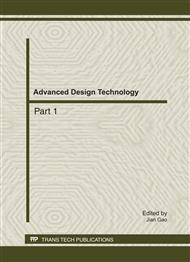p.1571
p.1577
p.1582
p.1586
p.1590
p.1596
p.1600
p.1604
p.1609
Establishing Key Integration Factors for Integrating Engineering and Sustainability
Abstract:
This study established the key integration factors (KIFs) to help participants to scrutinize the key issues during incorporating sustainability issues into engineering development projects. Firstly, Sustainability disputes in one case project were reviewed to understand their evolvement and to analyze the dispute. The key factors were identified by comparing other two types of integration cases. Secondly, focused interviews were conducted with practitioners to scrutinize the eight KIFs by analysing the interviewed opinions to ensure its applicability. The study results show that the eight KIFs were consistent with the key issues in the integration practice. These factors can remind the integration team to check the data quality, choose the appropriate assessment techniques, communicate with stakeholders, invite qualified experts , and then achieve consensus in the integration process.
Info:
Periodical:
Pages:
1590-1594
Citation:
Online since:
August 2011
Authors:
Keywords:
Price:
Сopyright:
© 2011 Trans Tech Publications Ltd. All Rights Reserved
Share:
Citation:


